
Imperial times
It is one of those strange 20th century twist: the town which was a great spiritual centre for over 18 centuries, to which pilgrims flocked in their thousands during classical times, now lies uncomfortably wedged between the highly toxic Bay of Eleusis and a forest of chimney stacks and factories.
A sacrifice to more modern gods of technology and industry, Ancient Eleusis is neglected by all but the most conscientious of tourists. But it is still worth making the pilgrimage, or at least a stop-off en route to the Peloponnese. Once within the sacred sanctuary, it is surprisingly easy to forget the not-so-pleasant background and, with a little imagination, recapture something of the atmosphere that reigned over 2000 years ago.
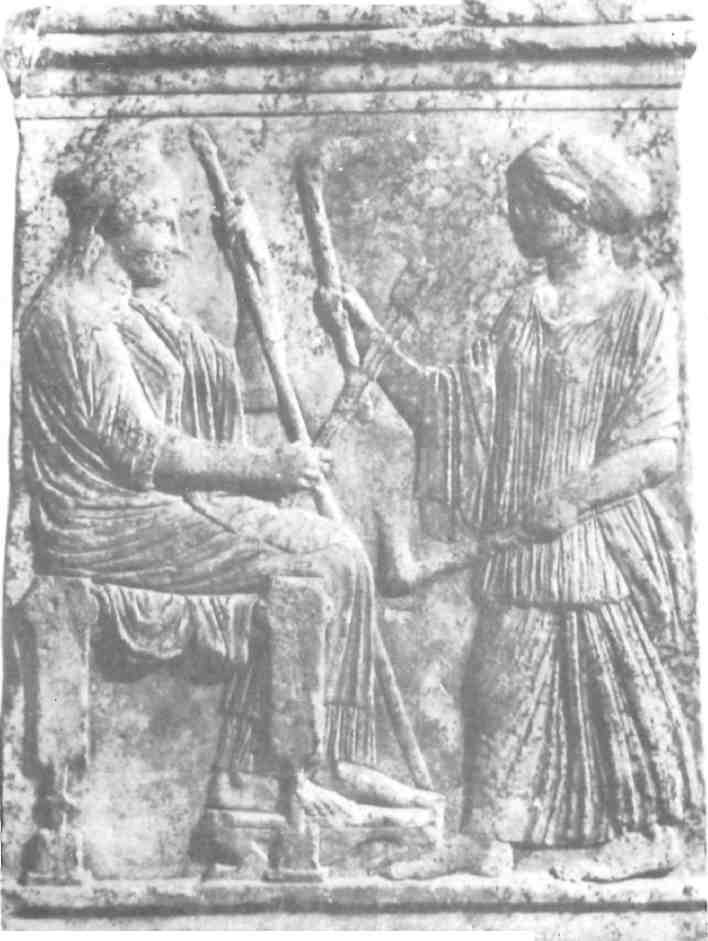
A city is thought to have existed on the site as far back as the 15th century BC, at which time Eleusis was already a centre of worship: excavations have uncovered a series of temples dating from Mycenaean to Periclean times and later alterations were made by the Romans. The Mysteries of the sacred cult of Demeter and her daughter Persephone (or Kore) were performed there until the suppression of the pagan cults in 395 AD.
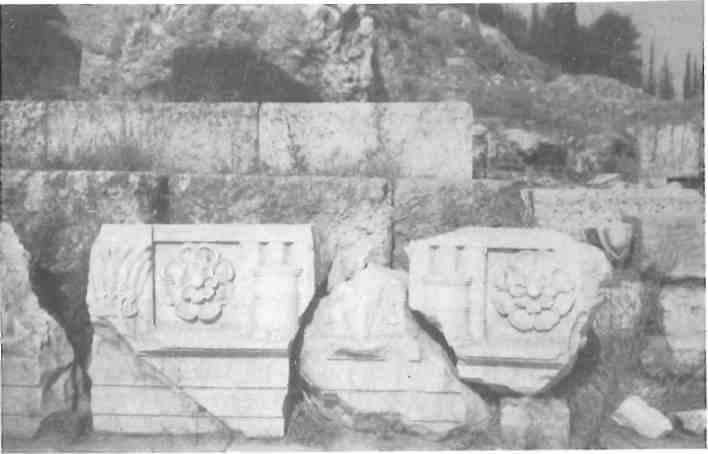
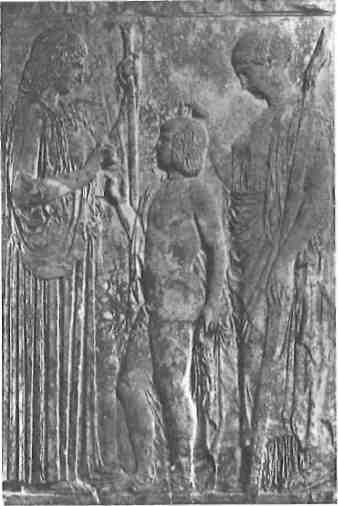
1859 in the church of Agios Zacharias
in the main square of Eleusis, where it
was being used as a threshold by the
Christians, luckily with the relief side
downwards
The oldest representation of Demeter and Kore at The Ancient Greeks, not unlike their modern descendants, were fond of festivals; in fact, over 90 days a year were given over to annual community festivals. At Eleusis, there were several yearly festivals in honour of the god-dess Demeter, of which the most renowned and elaborate were the Eleusinia or Mysteries. The cult of Demeter at Eleusis actually began as the religion of the royal family of Eleusis, the Eumolpidai, who traced their lineage back to Eumolpos, supposedly the first celebrant of the Mysteries to whom Demeter, through the second son of King Keleos, Triptoleinos, first revealed the secret art of agriculture on what was the most fertile land in Attica: the Thriasian Plain. Thus, in Archaic times at least (before they had achieved a Panhellenic reputation), the Mysteries maintained a primarily agricultural character, which is reflected by the fact that they took place every Boedromion (September), after the gathering of the crops (so people had more free time) and just before the seed-corn was brought up from the underground granaries for sowing. Thanks would be given to Demeter, the corn goddess, for providing the most basic of man’s needs, and rites would be carried out to ensure the rebirth of the corn crop the following year. Later on, however , the Mysteries took on an extra religious dimension.
By the mid sixth century BC, Athens, keen to extend her sphere of influence, had incorporated them into the religious life of the city. In the fifth century, initiation into the Mysteries was extended to all Greek speakers, including foreigners, and other Greek states were required to pay tithes to Demeter at Eleusis. Furthermore, the emphasis now was not only on the promise of a successful crop next year, but also on the promise of an afterlife.
The myth of Demeter and Kore, on which the celebration of the Mysteries was based, lent itself readily to such dual interpretation. According to the myth, Kore, the beloved daughter of Demeter, was picking flowers with her friends in a meadow when Hades, god of the underworld, appeared in a chariot pulled by black horses, snatched the young maiden, and vanished with her into a chasm. Distraught Demeter wandered the Earth for nine days, during which time neither nectar nor ambrosia passed her lips. Finally, having been given a hint by Helios, she came to Eleusis disguised as a Cretan woman. She sat down by a well and wept. The daughters of King Keleos came to draw water and introduced her to their father, who, ignorant of the goddess’s true identity, employed her as a wet nurse for his son, Demophon on whom she tried to bestow the gift of immortality , but was caught in the act and so forced to reveal herself. Demeter was eventually persuaded to smile by Keleos’ lame daughter, Jambe, who told her some rather lascivious verses, and the dry nurse persuaded her to drink kykeon, a posset made with barley and mint.
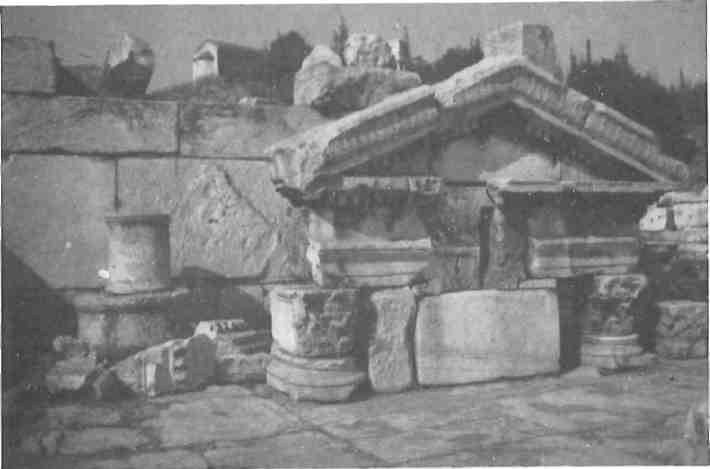
Once Demeter revealed her identity, she commanded a temple to be built in her honour, to which she retired, vowing never to return to Olympus nor allow crops to grow until her daughter was restored to her. Seeing that the race of men was now facing extinction, Zeus declared that Kore, who, as Queen of the Underworld, was now also known as Persephone, should be returned to her mother on condition that she had not tasted the food of the dead. One of Hades’ gardeners, however, revealed that she had eaten seven seeds pf a pomegranate. Finally a compromise was reached: Kore would spend nine months of the year wit h her mother and the remaining three with Hades.
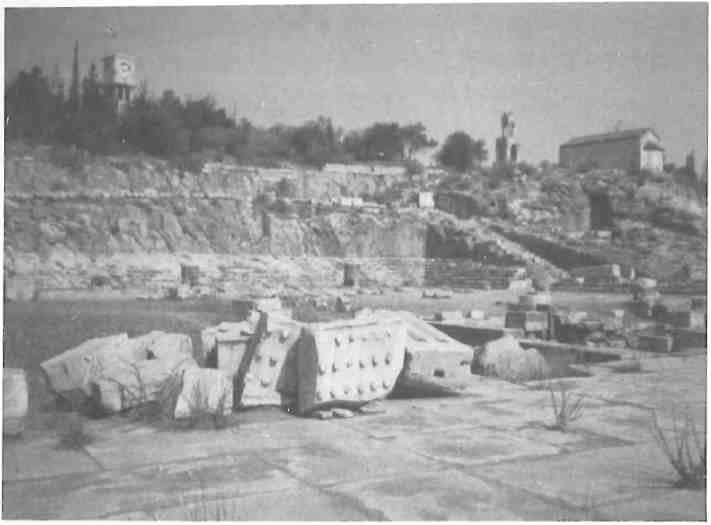
Overjoyed to see her daughter again, Derneter restored fertility to the land, covering the earth with flowers, and initiated her kind hosts into her secret rites, saying: “Blessed is he among men who on earth has seen these rites, but whoever is uninitiated and has no share in them has no part in the same things when he has died, down in the murky gloom.” Kore’s return was interpreted as the redemption of the individual soul from evil and the pledge of immortality. Special favours after death were also promised to the initiates.
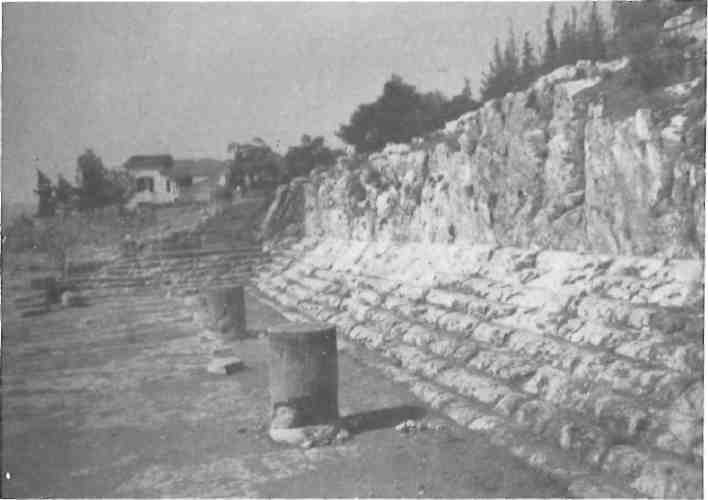
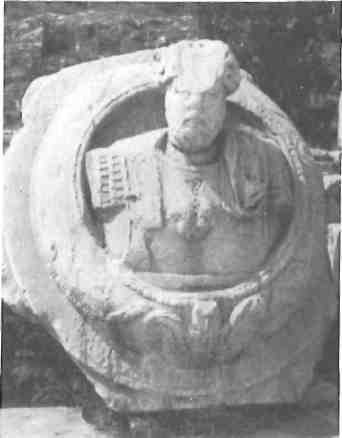
What actually went on at the Mysteries remains something of a mystery to us today, although many inspired guesses have been made. Very little was written about them, despite the fact that thousands of people were initiated. In fact, breaking the vow of secrecy carried the death penalty. We do , however, have a lot of information on the ceremonial march from Athens to Eleusis and we know that prospective mystai were required to undergo a kind of purification before becoming fully-fledged initiates. In the month of Anthesterion (February-March), the Lesser Eleusinia were held at Agrai in Athens (near the site of the present Panathenaic Stadium) on the banks of the River Ilissos. First time mystai received instruction from the high priest of Eleusis, and dramatical scenes referring to the life of Dionysos were performed.
Having been accepted as mystai, the initiates were allowed to take part in the Greater Eleusinia in September. A Panhellenic truce was called, all legal proceedings were adjourned, and Athenians of all social classes and ages began to prepare for the nine days of sacred rites (after the nine days of Demeter’s search). A group of armed young men were sent from Athens to Eleusis to escort the sacred objects (probably statues and symbols pertaining to the cult), which were carried in oak boxes by priestesses the 22 kilometres along the Sacred Way to Athens. Shortly before their arrival in the city, an announcement was made, calling all mystai to assemble at the Eleusinion in the Agora and warning the ritually impure (ie those tainted by homicide, incest, childbirth and death from natural causes, and not purified through the appropriate animal sacrifices) that they were not eligible for initiation.
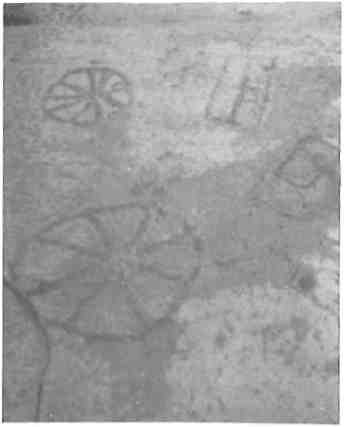
The next day all the mystai went down to the sea at Phaleron to purify themselves as well as the pigs which each of them was required to bring with and which were later sacrificed to Demeter.
Pig’s blood was held to be the purest and to have great properties of purification. After the sacrifice, the pigs were buried deep in the ground.
On the following days, various other rites took place, and then on the sixth day of the Mysteries, the procession of mystai (Iacchos or Pompe) left for Eleusis. At its head was the wooden statue of Iacchos, Deme ter’s lusty son, its priest, the priestesses with their boxes, the Hierophant (initiating priest) with his myrtle crown, other priests and state representatives, and, at the rear, the huge crowd of mystai dressed in festive clothes and myrtle wreaths, carrying bundles of supplies and a rod made of woven branches: the Bacchus, an important symbol of the Mysteries.
The procession made stops at several shrines along the Sacred Way, and at the bridge over the River Kifissos a strange ritual took place: the so-called gephyrismoi. The sacred objects and the priests were allowed to cross the bridge, but as each initiate went over, he was showered with abuse by men with their heads covered. This tradition has been linked to the fact that Demeter was amused by Jambe’s lewd humour.
Finally, late in the evening, the torch-lit procession arrived at the Kalichoron or Well of the Fair Dancers, where Demeter had sat down and wept, next to the entrance to the sanctuary. Here, women performed a dance balancing special clay pots, or kernoi, on their heads, and the mystai chanted. The mystagogoi bade all to abstain from food and wine until they had partaken of the kykeon. Then a bull was sacrificed, an offering of special bread was made, the initiates drank from the sacred cup seated on ram skins, and they were allowed to enter the enclosure.
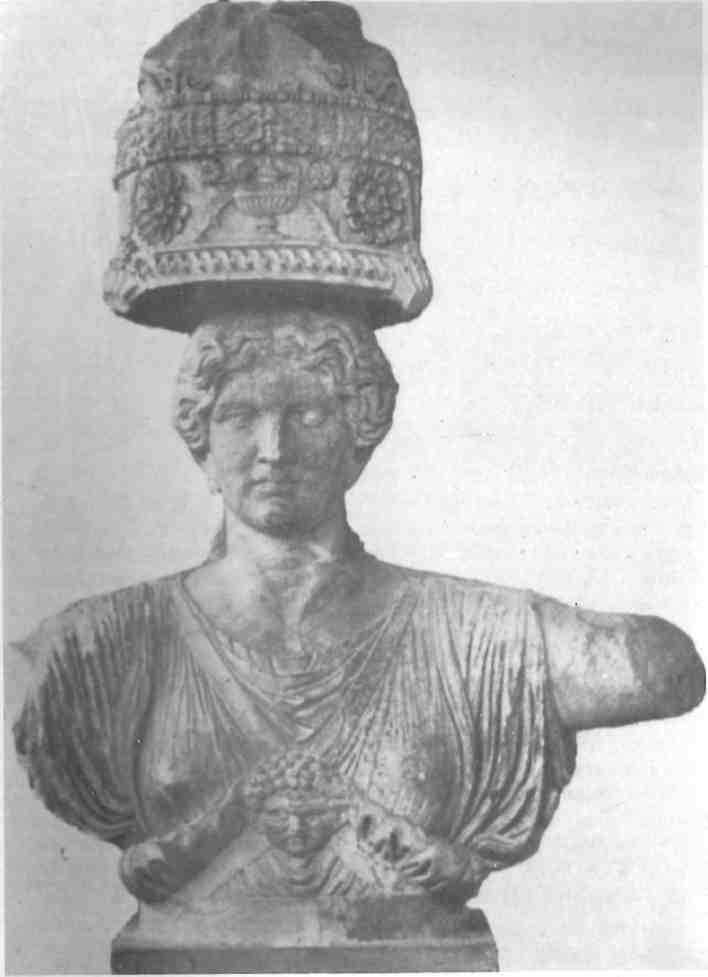
Of what took place inside the Telesterion, or Hall of the Mysteries, very little is known. It seems probable, however, that the rites were divided into three parts: first, the dromena (or things done), probably a pageant reenacting Demeter’s quest for her lost daughter; second , the legomena (or things said). which comprised the chanting of ritu.al formulas; third, the deiknumena (or things displayed), in which the Hierophant revealed sacred objects, perhaps ancient statues preserved from Mycenaean times.
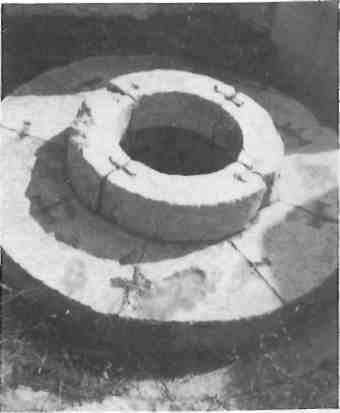
The mystai sat on the tiered seats which lined the Telesterion, dressed now in pure white tunics, and witnessed awesome and terrible spectacles, which seemed to transport them first to the horrors of the underworld and the fate awaiting the evil man , then to Mount Olympus itself and a glimpse of Elysium . Clever use was made of light, either with torches and lanterns, or from a sky-light positioned directly above the centre of the Anaktoron, or Holy of Holies, a small rectangular building in the middle of the Hall of the Mysteries.
The final and highest stage of the Mysteries was the Epopteia (or revelation), for those who had been initiated the previous year. They probably watched a representation of the secret marriage of Zeus and Demeter, the other most important event in the goddess’s life and symbolic of man’s salvation , and a single ripe ear of wheat, representing the eternal power of the life-regenerating earth, was raised up by the Hierophant.
The last cycle of the Mysteries was devoted to libations and rites for the dead, and there were dances and songs of rebirth and regeneration. The next day the initiates returned to Athens on foot, carrying no further obligation but feeling spiritually fulfilled and renewed.
Twentieth century pilgrims to Eleusis can still see the remains of many of the buildings important in the worship of the corn goddess: the Kallichoron Well, a beautiful example of polygonal masonry dating from the pre-classical era; the Plutonion, an enclosed cavern sacred to Hades, said to mark the spot where Kore was ravished under the earth; the ground plan of the great Telesterion, dating from the Periclean age, with its tiered seats.







